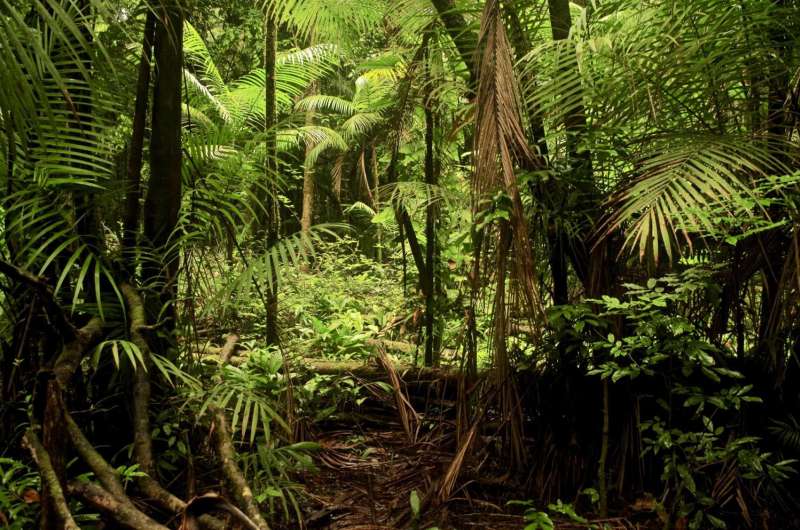Amazonia's best and worst areas for carbon recovery revealed

The first mapping of carbon recovery in Amazonian forests following emissions released by commercial logging activities has been published in the journal eLife.
The findings suggest that, in some of the forests disturbed by logging, surviving trees may be more reliable for storing carbon emissions than newly 'recruited' trees (juveniles that naturally regenerate in the logged forests).
Amazonia, the largest tropical forest globally, holds 30% of the carbon stored in the earth's forests. Logging releases a significant amount of this carbon—a key component of climate change - into the atmosphere, which is then recovered by surviving trees and new recruits.
No investigations of post-logging carbon dynamics have previously been carried out Amazon-wide. Now, researchers from the Tropical managed Forest Observatory have created a unique modelling approach to estimate accurately how the different forest environments impact carbon changes in surviving and newly recruited trees during post-logging carbon recovery.
"We studied long-term data from 133 permanent forest plots from 13 experimentally disturbed sites across Amazonia to model the changes in the aboveground carbon stocks in the first decades after logging," says first author and PhD student Camille Piponiot from UMR Écologie des Forêts de Guyane in Kourou, French Guiana.
"We looked at regional differences in climate, soils, and initial aboveground biomass within the forests and linked these with the changes in carbon stocks caused by both newly recruited and surviving trees to predict the carbon recovery potential Amazon-wide."
Their model reveals that carbon recovery is highest in the Guiana Shield in northeastern South America, and also in the western regions of the Amazonian forests, due mainly to the high carbon gain of trees that survived logging activity. In contrast, recovery is lower in the south.
Piponiot explains: "Forests of the Guiana Shield are generally dense and grow on nutrient-poor soils, where wood productivity is constrained by competition for key nutrients. Short pulses of nutrients released from readily decomposed stems, twigs, and leaves of trees damaged and killed by logging explain the substantial but limited-duration increase in the growth of surviving trees.
"In the southern Amazon, on the other hand, high seasonal water stress is the main constraint on carbon recovery. Stress-tolerant trees are generally poor competitors and this may explain the slower carbon accumulation in survivors in this region."
Principal Investigator and senior author of the study, Bruno Hérault, from Cirad, adds: "As climate change continues, we can also expect to see increases in droughts and fires that will further disturb the Amazonian forests. Betting on newly recruited trees to store carbon in some of the forests disturbed by logging might be a risky gamble, as most of them are pioneer trees highly vulnerable to water stress. Trees that survive logging activities may therefore be more reliable in accumulating carbon in these disturbed forests."
Hérault concludes: "While our study focuses mainly on carbon recovery after logging, our findings may also give useful clues to predict the forests' responses to carbon loss from fires and other events brought on by climate change, which is ironically caused in part by mass disturbance and deforestation."
More information: Camille Piponiot et al, Carbon recovery dynamics following disturbance by selective logging in Amazonian forests, eLife (2016). DOI: 10.7554/eLife.21394
Journal information: eLife
Provided by eLife




















